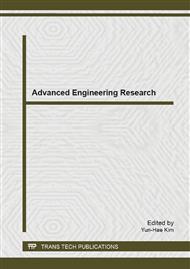p.962
p.968
p.974
p.978
p.987
p.992
p.996
p.1000
p.1005
A BP-ANN Based Surrogate Modeling for Predicting Engineering Analysis of Forging Press
Abstract:
Engineering analysis and simulation are time-consuming, and often trapped to computational burden, such as analyzing forging press. We herein employ surrogate modeling to reduce such computation cost while keeping high precision. This paper use a BP neural networks to building the surrogate model (BPNN-SM for short), and predicting the analysis results of mechanical structures with this model. The predicting process include confining design variables, sampling, building finite element model with business software ANSYS, constructing surrogate model to replace the original model and finally predicting data with the new model. In such process, we build a back-propagation neural network, and train it with sampling data from ANSYS results. We tested our methods with a mechanical structure design of hydraulic forging press. The experimental results verified the surrogate modeling.
Info:
Periodical:
Pages:
987-991
Citation:
Online since:
April 2014
Authors:
Price:
Сopyright:
© 2014 Trans Tech Publications Ltd. All Rights Reserved
Share:
Citation:


